Wagner cast iron cookware is regarded by many as some of the finest examples of 19th and 20th century cast iron. Much of the cast iron is over 100 years old and still usable today. These antique pans are sought-after by enthusiasts who prefer vintage cast iron to newer pans. But identifying and dating these old Wagner Ware Sidney -o-pans can be tricky.
So, with this article, I hope to help you and other proud owners identify and give an estimate of the age of your cookware. You can also learn the history of your cast iron, which the Wagner Manufacturing Company manufactured.
Table Of Contents
- Wagner cast iron. “Why is it so collectible?”
- Learn the history of the Wagner Manufacturing Company.
- Where you can buy Wagner cast iron.
- Considerations when purchasing Wagner cast iron cookware.
- You can identify and date antique Wagner cast iron using trademarks and logos.
- Final thoughts on collecting vintage Wagner Ware cast iron.
But first, here is a quick look at the Wagner Manufacturing Company.
Identify And Date Your Wagner Cast Iron Skillets Using Logos. Also, Learn The Fascinating History Of Wagner Manufacturing.
Background To Wagner Manufacturing Cast Iron.
Founders | Milton M. Wagner and Bernard P. Wagner |
Operational Dates | The foundry in Sidney operated from 1891-1959 |
Located | The Wagner Manufacturing foundry was in Sidney, Shelby County, Ohio. |
Product Line | Wagner was one of the largest American manufacturers of cast iron products in the 20th century. Their product line included skillets, kettles, bean pots, Dutch Ovens, roasters, fruit presses, scoops, broilers, Griddles, waffle irons, muffin pans, and cornbread pans. The company also had a range of aluminum cookware. |
Wagner Brands | Wagner labeled their cookware under the following names: Wagner, Wagner Ware Sidney -o-, Wagner Ware, National, Long Life, Magnalite, Wardway, and Ward’s Cast Iron. |
Signature Products | Wagner is best known for the Sidney -O- range of skillets and Dutch Ovens. |
Reason For Closure | The reason for the closure of the foundry came from two fronts. Firstly, the Wagner family sold their interests in the company in 1953 to the Randell Company. Secondly, the company struggled financially because of a drop in sales. The decline in sales was due to two World Wars, the Great Depression, the development of new cookware materials, and the increase of lower-priced imports from Asia |
Wagner After Buyout (Non-Collectible) | In 1957, the Randall Company purchased long-term competitor Griswold from McGraw Edison. The Randall Company sold the cast iron businesses to Textron Corp in 1959. General Housewares Corporation bought Textron in 1969. In 1994, the production of Wagner Ware ended. |
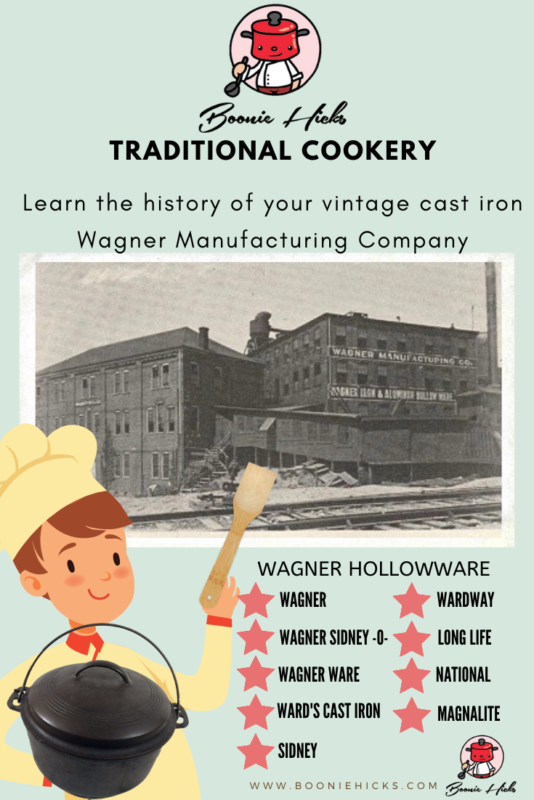
Why Is Wagner Cast Iron Collectible?
Super Smooth Cooking Surface.
Wagner cast iron is highly collectible. Like most antique cast iron, Wagner manufactured high-quality cookware for their entire range of cast iron products.
Unlike Wapak cast iron ironware, it often has characteristic casting flaws. Wagner cast iron tends to have a few casting flaws, resulting in very smooth cookware on both the interior and exterior of the cookware.
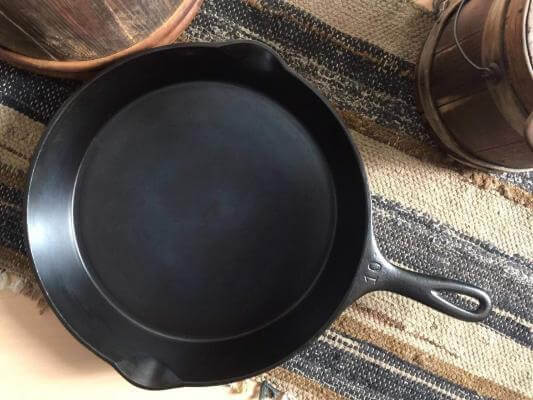
Focus On Quality
Imagine that workers would have worked on individual pieces of ironware. It was machined to smooth the interior and exterior of each pan. You can only see this level of detail in high-end cast iron cookware such as Le Creuset and Staub.
Today, Le Creuset and Staub benefit from combining traditional and modern manufacturing methods. However, the workers at Wagner could make cast iron cookware without casting flaws or bubbles. Must have taken great skill and attention to detail.
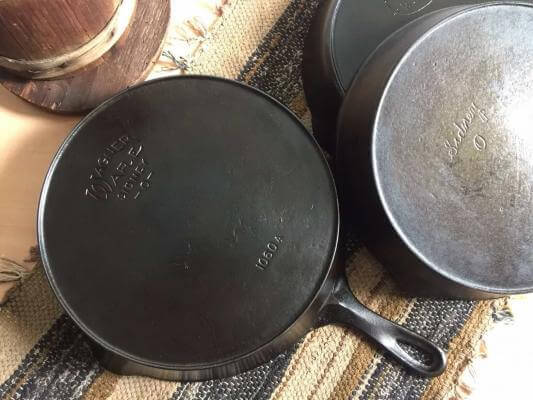
Wagner Made A Wide Range Of Cast Iron Cookware.
You can’t go wrong with an old Wagner cast iron skillet. It will serve you well for years, and they’re great fun. However, you may want to consider a Wagner Dutch oven. They are super smooth, and just like the skillets, they are reasonably priced. You can also buy cast iron muffin pans, which can be pretty cheap. But watch out for shipping costs that can increase the overall price drastically. Some of Wagner cast-iron cookware range includes:
- Dutch ovens
- Griddles
- Gem pans
- Waffle irons
- Skillets
You can even collect Wagner cast iron cornbread pans that look like corn cobs. Wagner Manufacturing also produced aluminum cookware, which must have seemed revolutionary.
Collect Your Favorite Logo.
If you want a vintage skillet, then Wagner skillets are a great choice. You can choose from sixteen different logos and trademarks or markings. I like pans with heat rings, while others may prefer a pan with a smooth base.
I think this wide selection makes Wagner cookware more collectible than other manufacturers, such as Vollrath and Martin Stove and Range, which manufacture a limited range of products.
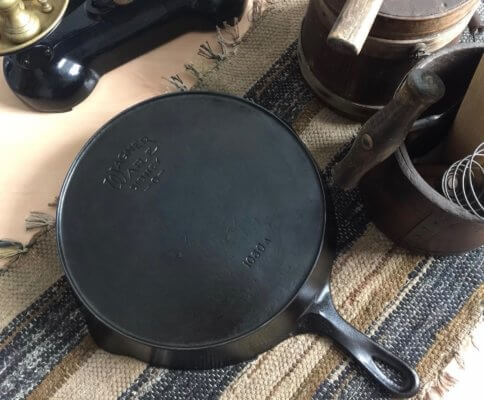
Wagner Manufacturing Company Focused On Quality Over Quantity.
Quality was a focus from the very start for Wagner Manufacturing Company. They even advertised this selling point to consumers. Old advertisements read;
We do not strive to manufacture hollowware as cheaply as possible but as well as it can be made. We cannot afford to put on the market ware that will not sustain our reputation. The name Wagner is on the bottom of each piece of ware.
Wagner Manufacturing Company History
Founders And Foundry
Who Founded Wagner Manufacturing? | Wagner Manufacturing Company was founded in 1891 by Milton M. and Bernard P. Wagner. However, two more Wagner brothers, Louis and William Wagner, joined the company in the following years. Another key player in the foundation of the company was R. Bingham. Bingham previously worked at Marion Stove Company and the Sidney Manufacturing Company. |
Where Was Wagner Cast Iron And Wagner Ware Made? | The company had its ironworks in Sidney, Shelby County, Ohio. Early cookware from Wagner Manufacturing had a simple Wagner marking on the back of the ironware. Wagner included Sidney O. in their cookware around 1895. The term Wagner Ware first appeared in the logo in the 1920s. |
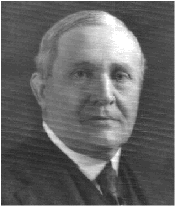
The Wagner Product Line Added Nickel Plating, Aluminum, And Magnalite.
Nickel-Plated Cast Iron | To complement their cast iron range, Wagner added a nickel-plated range. Unlike cast iron and copper pots, nickel plating does not react to acidic foods such as tomatoes, which can taint food. It’s easy to look past the development of nickel-plating. But, in the 19th century, bonding two metals together would have required much metal casting expertise. |
Aluminum Cookware | Along with nickel-plated cast iron, the Wagner brothers in 1894 manufactured a line of aluminum cookware, and Wagner Manufacturing was one of the first companies to do so. |
| Aluminum Cookware Exported To Europe | By 1913, Wagner cast iron and aluminum products were selling in Europe. |
| Magnalite | In the 1930s, Wagner manufactured a cookware line with a patented aluminum alloy called Magnalite. |
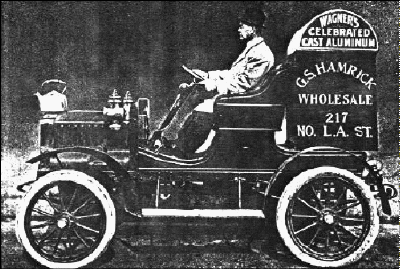
Wagner Manufacturing Buys Their Sidney Competition.
| Wagner Bought Sidney Hollowware Company. | In 1897, Wagner bought the Sidney-based competitor Sidney Hollow Ware Co. from the founder and owner Phillip Smith. Sidney Hollow Ware made high-quality cast iron cookware that was extremely light and smooth. Sidney Hollow Ware Co. was also an early adopter of nickel-plating cast iron. |
Why Did Wagner Buy Sidney Hollow Ware Company? | It was a brilliant idea to buy the Sidney Hollow Ware Company. After all, Wagner Manufacturing and Sidney competed in the same city and made comparable products. However, it was common knowledge that Smith made a tidy profit from his original investment in the foundry. To run the Sidney Foundry, William H. Wagner joined the family business to oversee the operation. |
Wagner Sold Sidney Hollow Ware Back To Phillip Smith. | In 1903, Wagner Manufacturing sold the Sidney Hollow Ware Company to the founder, Phillip Smith. Sadly, Phillip Smith did not reopen the foundry due to health reasons. |
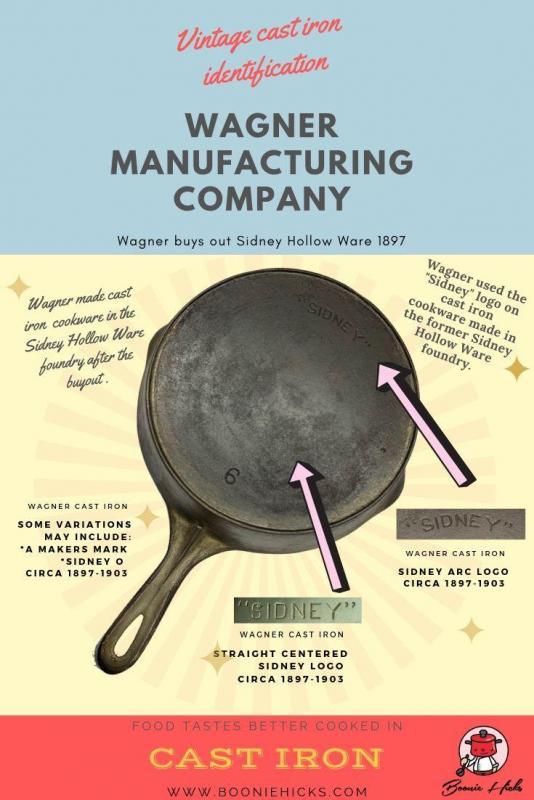
Wagner Introduced A New Product Line To Stop A Decline In Sales.
| The Great Depression (Magnalite) | I have to take my hats off to Wagner because they introduced a new product line called Magnalite in one of the deepest recessions the world has ever seen. Wagner Manufacturing was steadfast in making only quality products. For this reason, the cookware is collected and highly usable. |
| The Sales Decline | Wagner introduced Magnalite to stop falling sales at Wagner Manufacturing; it was not due to their product range. Magnalite was hugely popular, but it could not offset the effect of the worldwide recession. From 1929-1941, the US was in the grips of what we now call the Great Depression. Therefore, it was not only Wagner. However, many foundries struggled financially to survive. Many didn’t. |
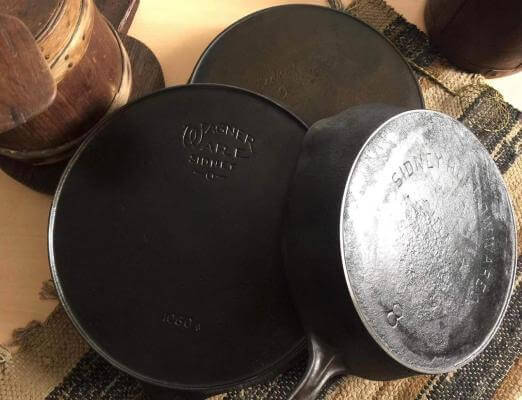
The Family Sells Their Interest In The Foundry.
Wagner Family Sells The Company To Randall Corp. | Wagner Manufacturing Co. lasted longer than many foundries. However, in 1952, Wagner was sold to the Randall Company. Unbelievably, the Randall Company was a car parts manufacturer. |
Textron Buys Randall | In 1959, another business called Tetron bought Wagner. Textron also purchases Griswold Manufacturing Company. At this date, cast iron enthusiasts consider this the end of Wagner Ware production. Wagner cast iron pans made after this date are considered not collectible. |
General House Wares | General Housewares Corporation in 1969 bought the rights of Griswold and Wagner. |
Is Wagner Ware Still Made? | With the world rediscovering cast iron cookware, will we see Wagner Ware skillets manufactured again? General Houses Ware stopped the manufacture of Wagner Ware in 1994. However, there is a glimmer of hope for Wagner Ware. In 2014, American Culinary bought both the Wagner and Griswold trademarks. So, fingers crossed, cast-iron fans may one day decide to manufacture Wagner cast iron again. |
Where Can You Get Your Hands On Some Wagner Ware?
- Grandparents (best deal and great to keep your heritage in the family).
- Antique stores (check online to compare the store price).
- Garage sales (rescue those poor skillets from the tip).
- Flea markets (search the markets for hidden gems).
- Online (largest selection available; however, asking prices can vary greatly.
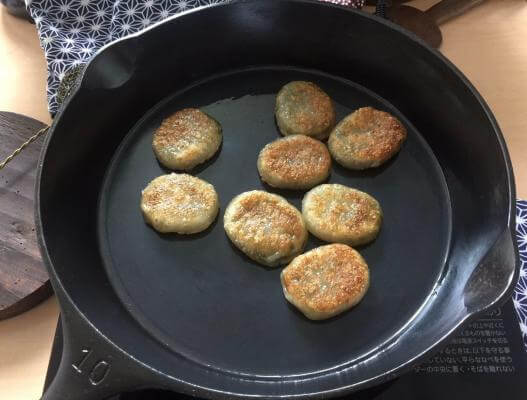
Buying Considerations Before You Buy Antique Wagner Ware
There Is Plenty Of Wagner Cast Iron Around, So Take Your Time.
There is no shortage of Wagner cast iron. Wagner had a large percentage of the cookware market back in its heyday. And plenty of fantastic Wagner skillets and Dutch ovens are in excellent condition.
What Size Skillet Or Dutch Oven Suits Your Needs?
The first thing you may want to think about is the size you need. There are often plenty of #8 skillets around. This size seems to be the most common for Wagner skillets and other vintage cast iron manufacturers, such as Favorite Piqua.
Inspect Carefully Since A Lot Of Wagner Ware Is Nickel-Plated.
Check the cookware carefully. The Wagner Manufacturing Company was an early adopter of nickel plating. However, most of Wagner cookware is unplated iron. Heavy seasoning may hide nickel plating. Nickel-plated can wear off or be patchy in places. Take a close look before purchasing.
Would You Like A Wagner Ware Skillet With A Smooth Bottom Or Heat Ring?
Do you want a pan with a smooth bottom or one with a heat ring? The older Wagner Ware skillets will have a heat ring, while the later-made pans have a smooth, flat base. It is a personal preference. I tend to like the older skillets with heat rings. They have more character, but the smooth-bottom Wagner cookware tends to be a little cheaper. And they are great cooking pans, too.
Does The Cookware Sit Flat?
As with all antique cast iron, asking the seller if the pan sits flat could be a good idea. A lever base is practical if cooking on a flat surface such as induction or glass.
Learn To Date And Identify Your Wagner Cast Iron Using Logos And Markings.
Although I’ve researched carefully, please only use the dates as an approximation.
Wagner cast iron cookware, to my knowledge, has sixteen known logos, brands, or markings. These include:
Straight Wagner Logo 1890s-1915
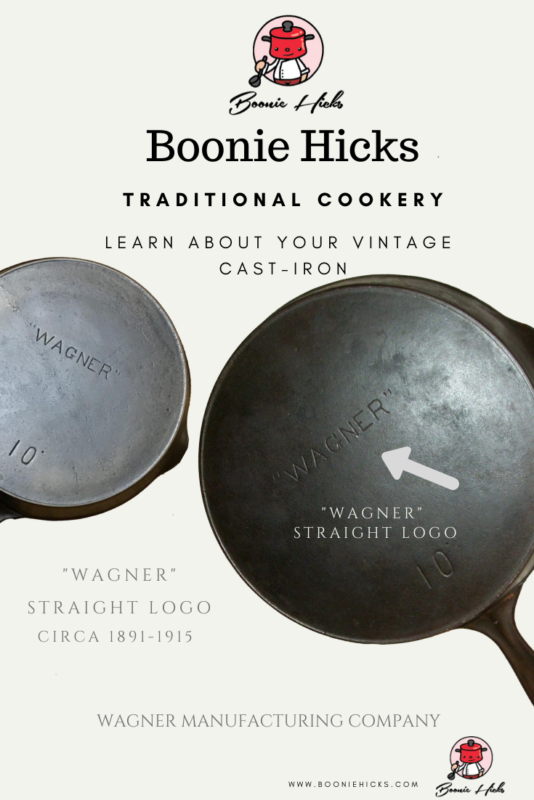
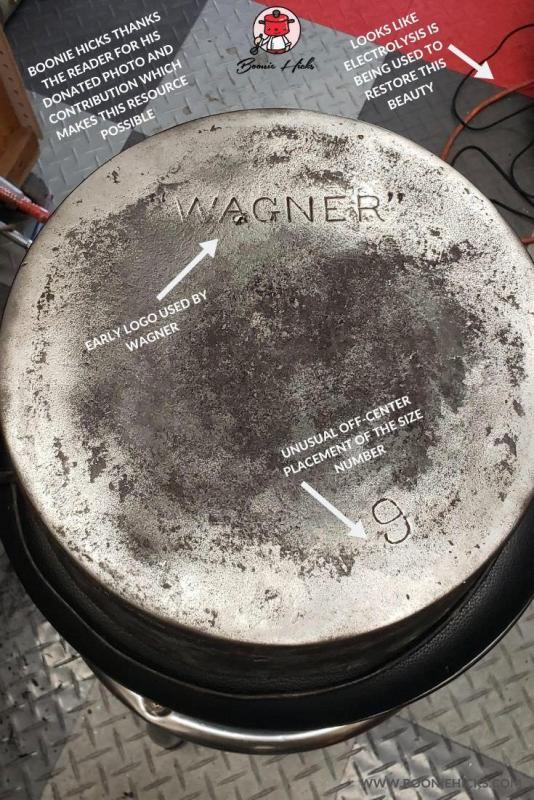
Wagner Arc Logo 1891-1910
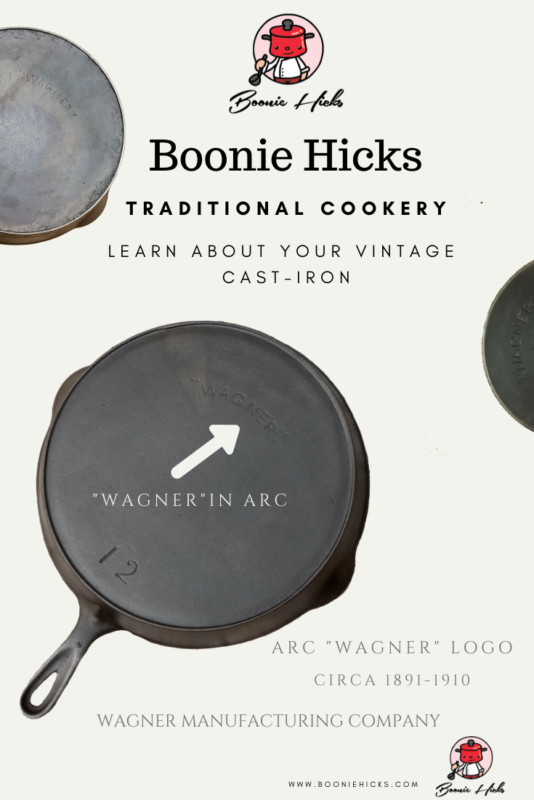

Double Arc Wagner Sidney O 1895-1915
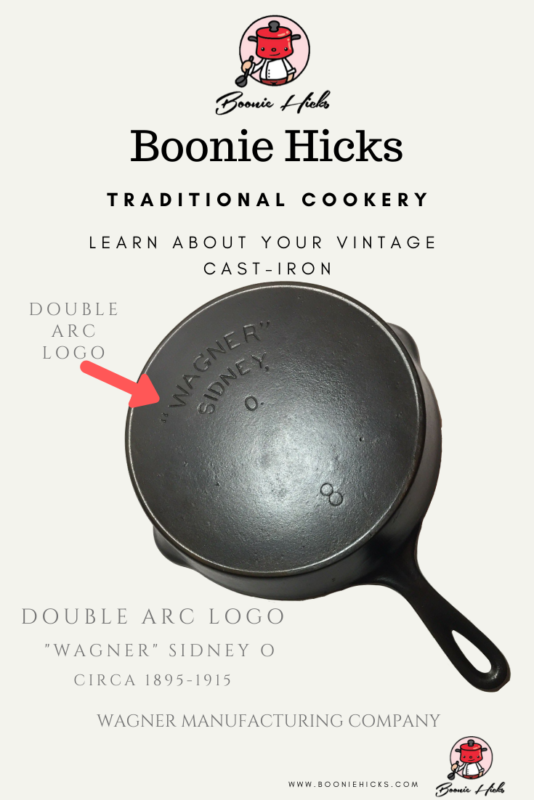
Sidney Arc logo Circa 1897-1903.
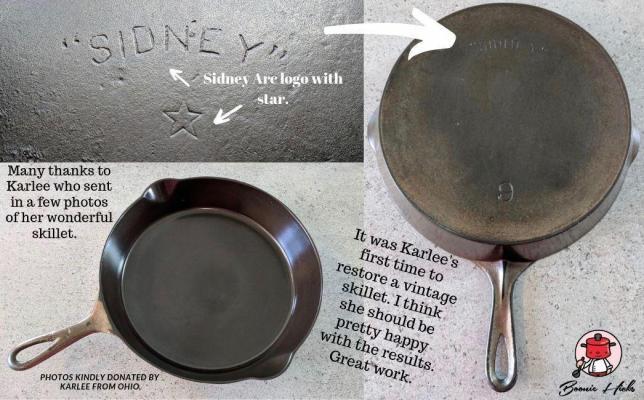
Straight Sidney Logo Circa 1897-1903.
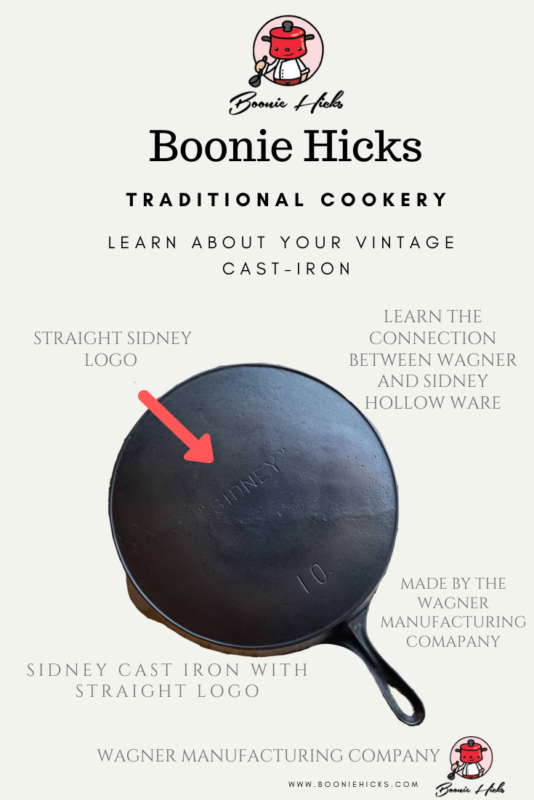
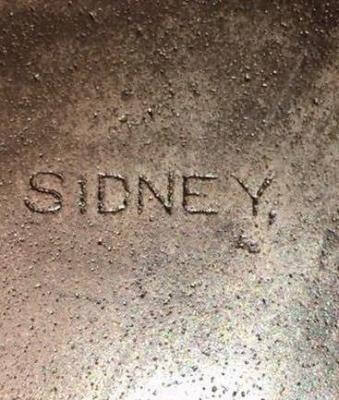
Straight Wagner Sidney O. (Centered.) 1910-1915
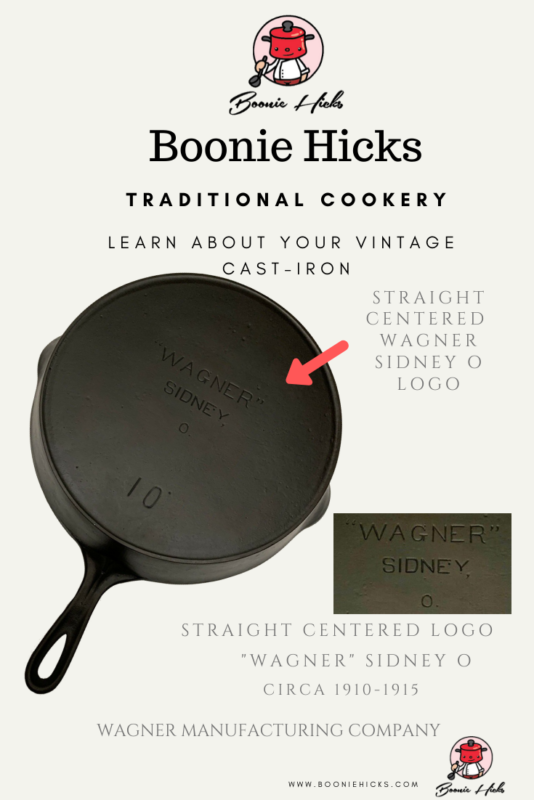
Wagner Sidney O. Wagner Slightly Arced While The Sidney Lettering Is Straight. Circa 1915-1920s
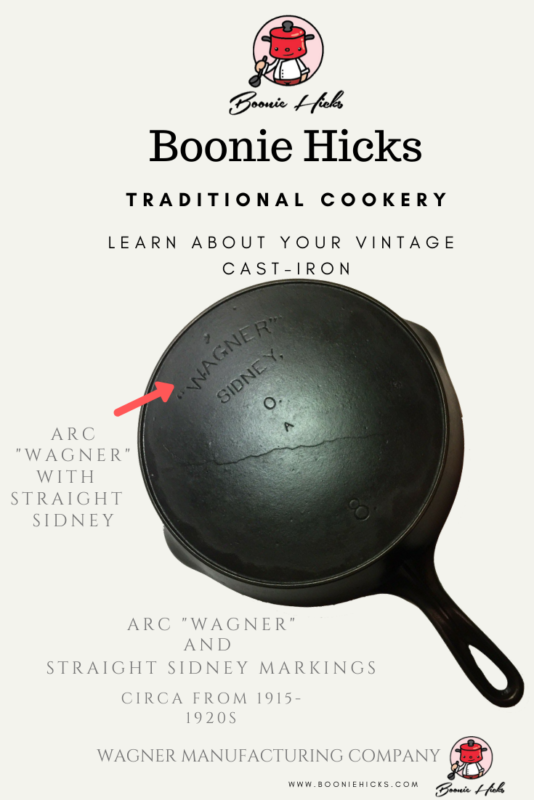
First Wagner Ware Sidney O. With Arc Wagner And Straight Ware And Sidney. Circa 1920s.
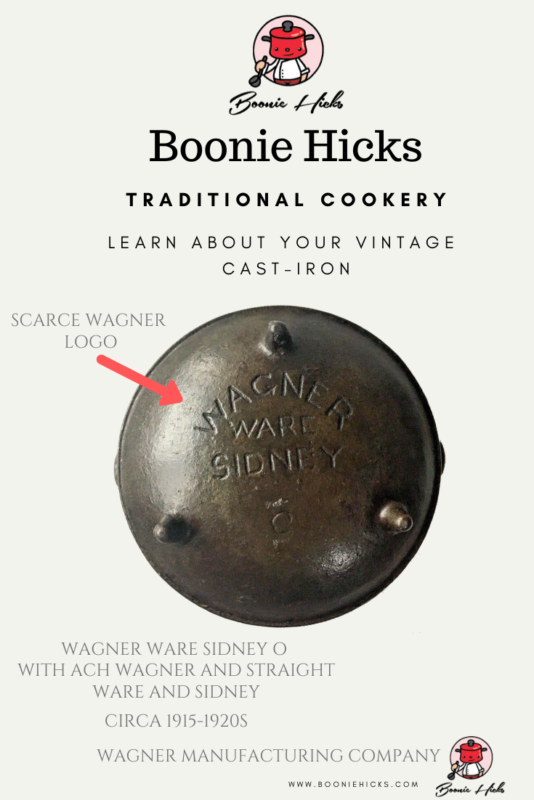
Stylized Wagner Ware Sidney O. for regular skillets. Circa 1920-1924 with heat ring and single-digit size number. 1924-1935 with a heat ring and a four-digit pattern number. Around 1935-1959, for skillets with no heat ring.
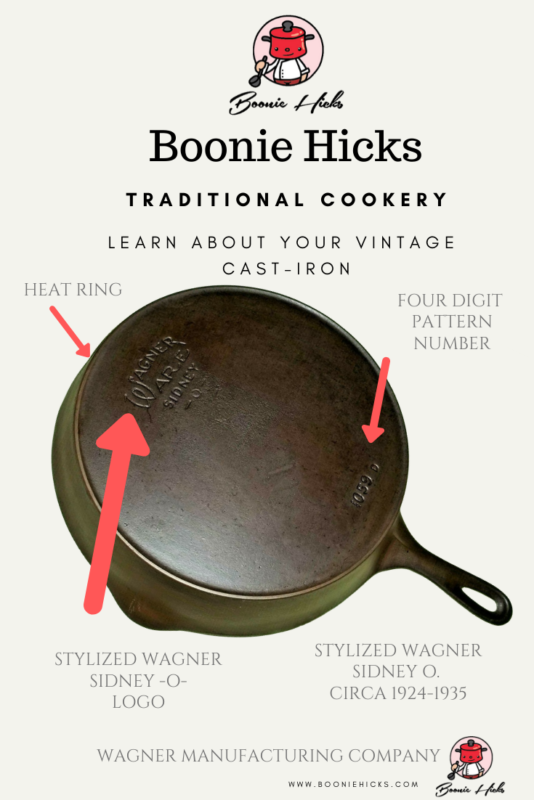
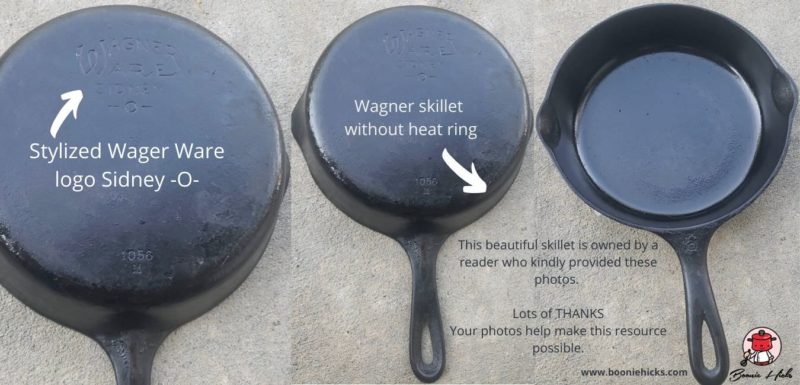
Centralized Stylized Wagner Sidney O. 1924-1935 With Heat Ring.
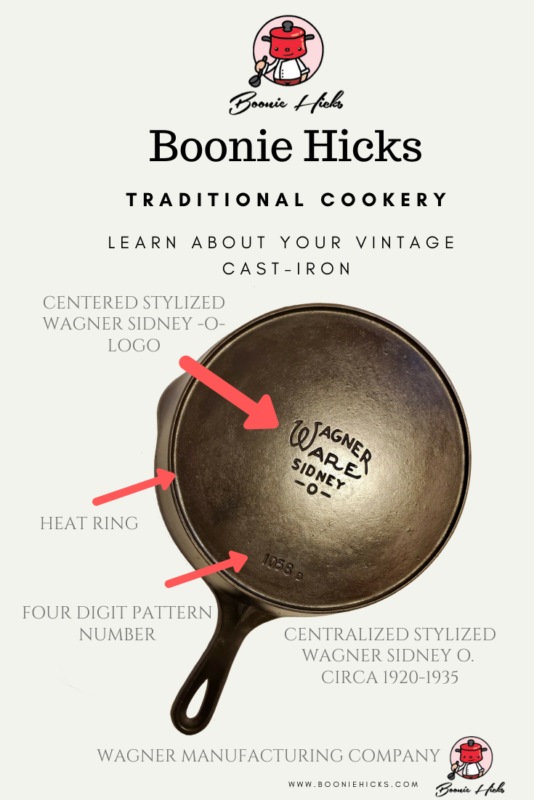
Pie Logo 1924-1934. However, Manufacturing Dates Are Uncertain.
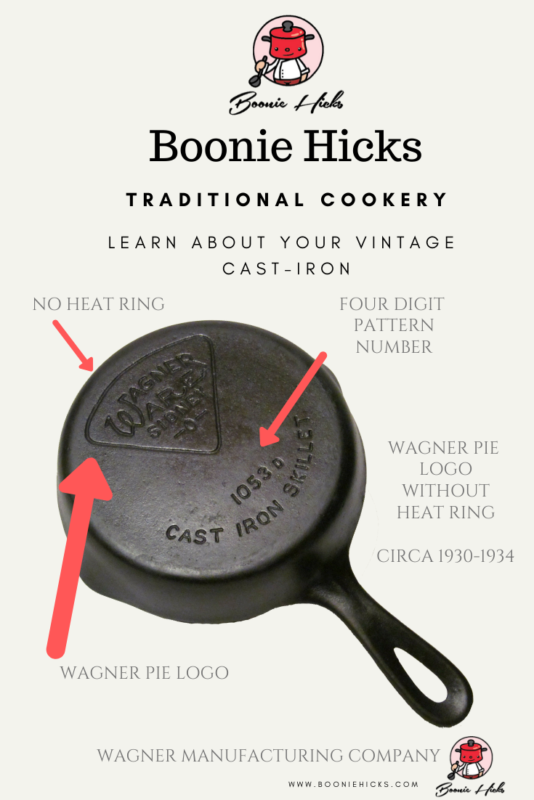
National Cast Iron Dates Between 1914 and 1940s
There are several different versions of cast iron with the National marking. Wanger marketed the Nation brand as entry-level cookware for budget-conscious consumers. Wagner made the National line circa 1914 to 1940.
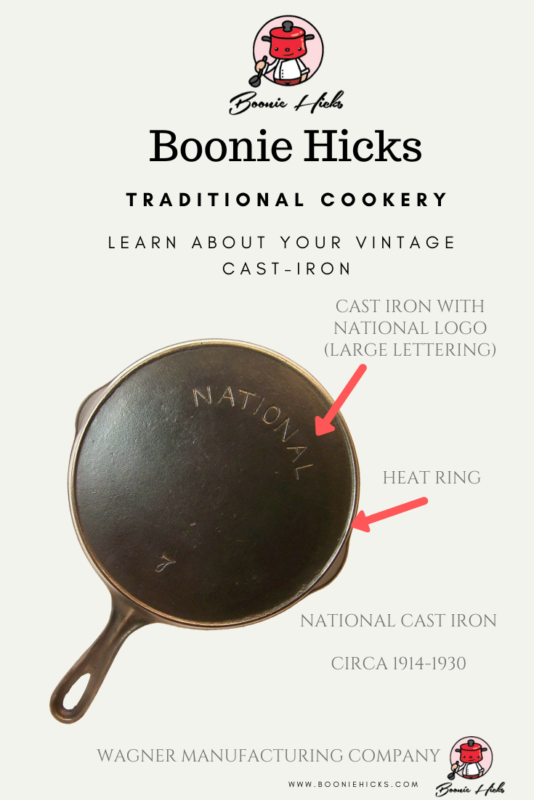
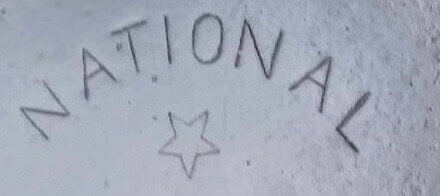
Long Life Logo 1930s.
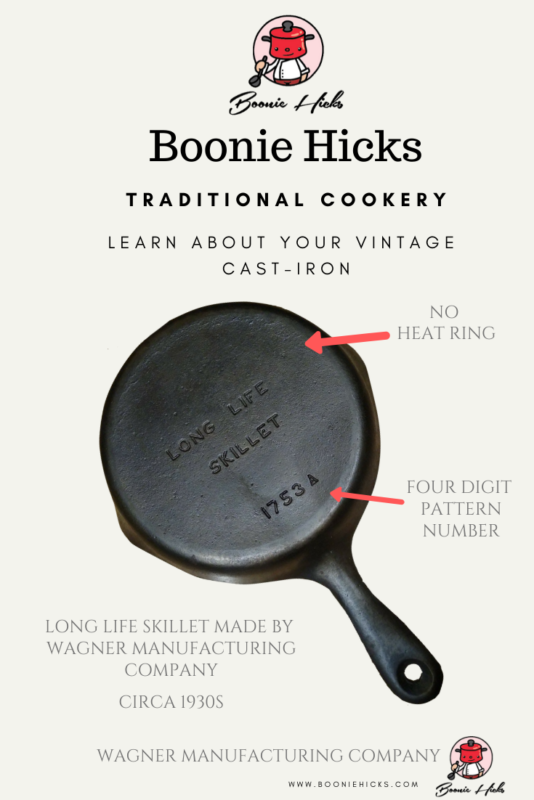
Wardway and Montgomery Ward. The Montgomery Ward Department store contracted Wagner Manufacturing Company to produce an in-store label. Circa the 1930s.
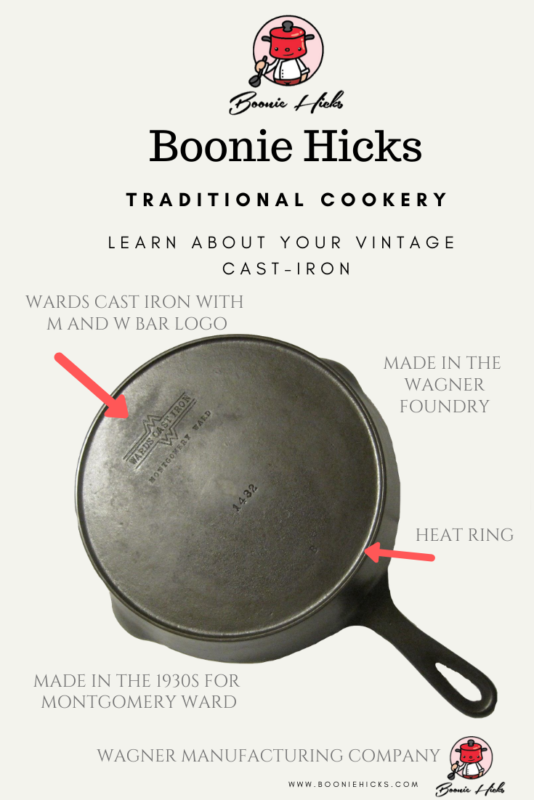
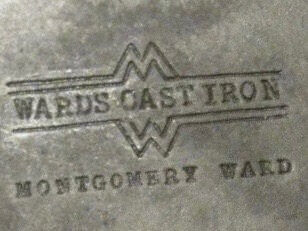
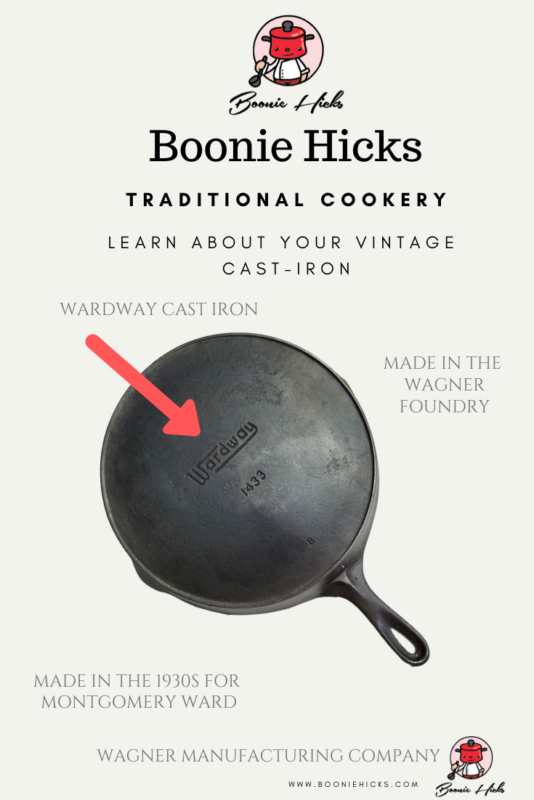
Final Thoughts On Wagner Cast Iron.
Fortunately, Wagner cast iron is more straightforward to date than other foundries of the time. Wagner Ware also has a huge collector base, so dates are well documented. The Cast Iron Collector is a valuable online resource for enthusiasts. Also, there are Facebook groups where you can share your love of cast iron cookware.
The Wagner Manufacturing Company was known for quality over quantity. Therefore, it has a good reputation for making trustworthy products.
Today, collectors and enthusiasts seek out Wagner cookware. However, you don’t need to be a collector to enjoy vintage cast iron. Here are six reasons why Wagner Ware is excellent ironware.
Although many cast iron enthusiasts look for Wagner-made skillets. But you’re not limited there. Wagner Manufactures a wide selection of cast iron cookware. You may find yourself becoming interested in:
- muffin pans
- Dutch ovens
- Scotch bowls
Since Wagner made some of the finest cast iron of the 19th and 20th centuries, Wagner ironware is still sought-after by cast-iron fans and hobbyists alike.

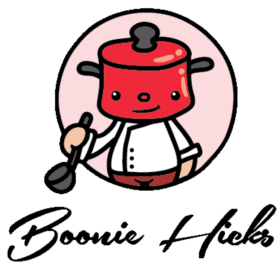
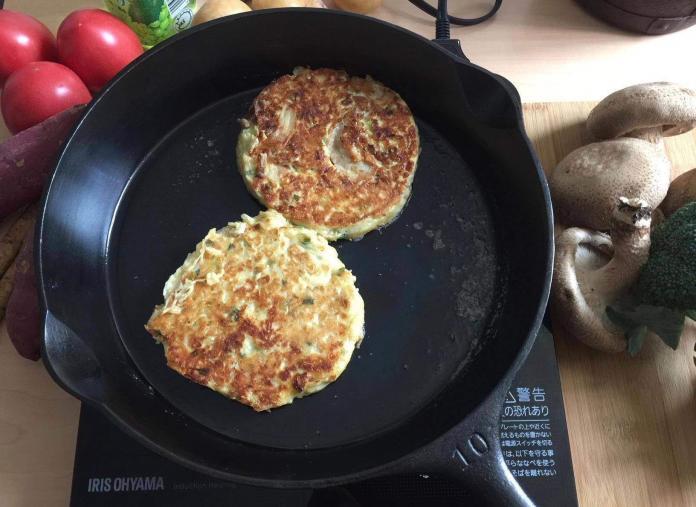
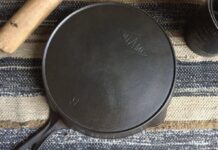
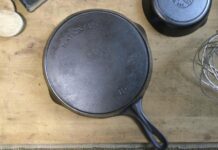
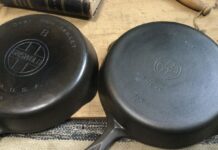



My wife and I have been cast iron hobbists for more than 30 years. We bought, new, some of the 1891 Wagner pans with the seasoning instructions on the back and have never had a complaint. They work great. Since then we scour yard sales and thrift shops. We have discovered these places have the absolute best prices, some for as little as a dollar a pan. We even keep a cast iron pan in our camper. Got a Sydney-O- for free not too long ago, just because I was admiring it on a hook in someone’s kitchen. The owner admitted that it had been a family hand-me-down but that they had never used it.
Hi Wayne
Thanks for sending in your experience collecting cast iron and where to find these hidden gems.
You’re very lucky getting a free Sidney -O-. But it also sounds like it’s gone to a very good caring home.
Hi Boonie!
Glad to know there are other skillet nerds like me!! I am a collector and re-season
skillets and dutch ovens for many people. I am The Skillet Doctor! You have a wonderful collection of cast iron and I thank you for all of your knowledge- I am a member of the Cast Iron Collector Forum and use that as a resource.
However, I will check back with you periodically if I need more info!
Just found out about the Findlay Cast Iron company from Ontario, Canada. Seems they were the Griswold of Canada- A family business until the foundry closed in the 70’s. Interesting!
Just purchased one of their skillets. Will let you know how it cleans up!
Keep up the great info!
Seth Affoumado
theskilletdoctor.com
Hi Seth
Thanks for stopping by. It’s great to hear from collectors and enthusiasts like yourself.
The Cast Iron Collector is a great resource for serious collectors and the site owner is extremely knowledgeable and helpful. So it’s very humbling you have also found the articles on my little site informative. Hopefully, I’ll add a couple more articles on vintage cast iron this year which you might find interesting.
Thanks for letting me know about the Findlay Cast Iron Company and congratulations on your purchase. It sounds like the skillet has gone to a good home. I’ll be interested to know how it cleans up.
By the way, I had a cheeky look at theskilletdoctor.com. It’s wonderful you are helping proud owners restore their treasured vintage cast iron.
Cheers
Brett a.k.a Boonie
Hi Boonie,
Thank you so much for all of this helpful information on cast iron. I just bought a Wagner Ware Sidney -o- pan (markings on back 1058 x), numbered 8 on handle. I noted your warning to watch out for the nickel plated Wagner Ware. I’m just wondering how to tell whether the pan is nickel plated or plain cast iron. Thank you so much in advance for your help.
Hi Ashley
Thanks for getting in contact and I’m really happy you’ve found the information useful.
Firstly, congratulations on buying an antique pan and welcome to the vintage cast-iron community. A number 8 Wagner is a great sized pan, I reckon you’ll be very happy with your Sidney -o-.
Nickel or chrome plating will appear shiny. Quite often plating is worn off on the cooking surface, however, the handle and side will likely have the appearance of silverware.
Regular cast-iron with without seasoning is also silvery, which is a surprise to many users because we are used to seeing pre-seasoned ironware which has that lovely coating that we all love. If your pan is jet black then you have a regular cast iron pan but if your pan is seasoned but still appears silvery or bronze then it might be plated.
Hope this help and have fun using your skillet
To Ashley-
Since I work to restore older cast iron cookware, I’ve worked on nickel plated pans and found the cooking surface to be just as smooth as non-nickel pans. However, when seasoning
do not coat the exterior of the pan with Crisco or whatever you use to season! That can lead to a yellow film build up on the silver / nickel surface- Only season and re-coat the cooking area
after each use…And NEVER wash any cast iron pan with soap! ‘Cause The Skillet Doctor gonna get ya if you do!! LOL!
Congrats on your pan and use it in good health!
Best
Seth
Theskilletdoctor.com
Hello Boonie,
Yesterday I was excited to find a completely unused Wagner Ware skillet. Although it has the classic Wagner Ware logo, it also says
“General Housewares Corp”
“Made in USA”
“10 1/2 INCH SKILLET”
“E”
Again, it’s completely unused. Call it “new”. Even if it’s only from the 50′ or 60’s, it seems remarkable that it sat on a shelf for decades never even being allowed to get rusty. How old IS it? And does it’s new/unused condition add greater collectors value?
Happy New Year!
Hello Robert
Thanks for sending in a question and good description. I know exactly the skillet you have seen.
It’s a very exciting find. You’re right it’s unbelievable that the skillet is almost in perfect condition.
You’re on the money realizing it’s not an early 20th century piece. With the wording “Made in the U.S.A.” and the missing “Sidney O” we can date the skillet from 1960 onwards.
Some enthusiasts might date your skillet from the 1970s-1990s. However, I date the pan with the two logos a little later and place it from mid 1980s to early 1990s.
Unfortunately, the dual logo currently doesn’t hold much collector interest. You probably have noticed the casting is not as smooth as the older pans. But who knows if it will be a collectors item in the future. However, it’s still a very usable pan and I bet it can cook up a pretty good English breakfast.
Thanks for sharing your find and I hope you and loved one have a fantastic year ahead.
Cheers
Boonie
Do you happen to have a list of every size of the WAGNER SIDNEY – O SIZES?
thanks
Hi there Renee
Thanks for your question
You sound like a keen cast-iron enthusiast yourself.
Unfortunately, I don’t have anything compiled. However, adding sizes to this post or another post sounds like a great idea.
Thanks for your suggestion.
I inherited my Grandparents old skillet. It has the Wagner Ware curved logo, 9 inch skillet, and Made in USA on the bottom. But doesn’t say Sidney O or any model number. Has a number 6 or 9 on the handle. It’s a flat bottom. Just curious on the history. I’m assuming between 1920’s and 1952 but wondering what your thoughts.
Hi J
Thanks for getting in touch and posting a very good description.
I’m sure your grandparents are smiling and happy that you are researching their skillet. There are two markings on your skillet which can be used to identify and date your ironware. Because it has “Made in the U.S.A” it was made sometime after 1960 and possibly up to the 1990s. Sorry it’s not as old as the real old timers. But it’s a treasured heirloom.
I hope it brings you many happy memories
Brett a.k.a. Boonie
Boonie, thanks so much getting back to me. I saw one just like it on eBay for $40 so I figured it wasn’t real valuable but just found it odd that I couldn’t find any info on that that exact model. Thanks for informing me! It still makes awesome chorizo and eggs! And I’ll keep it in the family for generations to come. Thanks again!
J
I recently found a Wagner number 1428 fryer pan. I have several books on cast iron and cannot find that number or any information. It is two piece, similar to a waffle iron design, but smooth with two handles and two ball type hinges. I assume it fits a base, but don’t know. Just looks like it should. Any info would be appreciated
Hi there Bruce
Thanks for your question.
I checked the pattern number on your Wagner 1428 and you may have a Damper.
Does it have a few holes and a large pin running through the center? If so it may have once belonged to an old wood range. Very cool.
Hope this point you in the right direction.
Cheers,
Now this was funny.
I just came into possession of a Wagner Ware -0- Sidney Square Skillet but can’t find any information on it. It even has an indention made into the handle where your thumb would go. Any help would be appreciated. Thanks
Hi John
Thanks for your question.
Those Wagner Square skillets are pretty cool looking in my humble opinion. Wagner made a couple of styles of the square skillet. The pattern number on the skillet is either a 1218 or 1220 for the larger skillet. The pattern number is located at the 12 o’clock position on the back. The two design have a slightly different appearance, with 1930s version more square and with a rounded handle. Your Wagner Square Skillet with a thumb rest, I suspect has a rectangular shaped handle and slightly rounded corners. If that’s the case I’d say your skillet is circa 1940s-1950s as a rough estimate. It doesn’t have a made in the U.S.A on the skillet but there are unmarked Wagner Square skillets that look exactly the same with “Made in the U.S.A” which were made probably in the 1960s.
I bet it cooks a great breakfast
Enjoy your skillet
I’ve been trying to restore my old skillet but have had a problem and could really use some help. After I cleaned it up and removed all the old gunk, I washed it and it looks rusty. I was going to try to season it but when I applied some oil and rubbed it it, the towel is brown. How can I get this rust look gone? Thanks for any assistance
Hi John
It’s great to hear from you and it sounds like you are having fun with your restoration.
I like the vinegar method to remove rust. Especially if you have one piece to restore. You can see this method on youtube.
In this method you soak your cast iron in container with a 50-50 solution of water and white vinegar.
1. Let it soak 10-15 minutes (No longer, vinegar can pit the surface).
2. Rinse and hard scrub with soapy water
3. Repeat steps one and two.
This should remove the rust and grime. Quickly dry and apply oil to prevent flash rust.
However, many youtube videos totally submerge the cast iron the solution. And I find this unnecessary and expensive. A spray bottle works great. But personally, I just make the solution in a cup and tip a little in the skillet. Then work it in with my hands. It’s a little messy this way but it saves buying vinegar in bulk.
Good luck with your project.
I have a Crusty Corn Cobs Junior REG IN USA PAT OFF PAT July 6, 1920 #1319, WAGNER arc over WARE then Sidney under that then -0- …when was it actually made?
Hi Brenda
Thanks for your question.
I know your pan very well have and have one of these little cuties myself. They’re a great sized pan and I hope you get the same amount of use and enjoyment from yours.
I believe Wagner made the Krusty Korn Kob pans from circa 1940-1960s.
Hope this helps, enjoy your vintage Wagner Ware
Thank you!
I also have a Krusty Korn Kob junior and I wanted to know if you could clean it and how?
Hi Ruth
Thanks for your question.
It sounds like you’re having a little difficulty washing your cornbread pans. Yes, the mixture really gets baked on. And your’e left asking yourself, if it’s really with the effort?
To reduce sticking and to make washing-up a lot easier I recommend preheating your Kristy Korn Kob pans fully oiled before adding your mixture. Searing hot is preferable. ̇While handling searing hot oiled pans is not ideal, it should release your cornbread a lot easier.
Cheers, hope this helps.
I found a Wagner 8 in skillet today, can you help date it? It has Wagner Sidney Ohio USA in an oval and 8 in / 20 cm. B 2 – 98 on a smooth bottom. I have not been able to find info on that logo.
Hi Mitzi
Thanks for your question.
It’s interesting there have been a few readers asking about this logo recently. I’ll have to update the article to include the logo.
This logo wasn’t made by Wagner Manufacturing but another company which bought out Wagner. I’m not sure exactly when this logo was used, so I’ll give a conservative manufacturing date of circa 1960s-early 1990s.
Cheers, hope this helps Mitzi, enjoy your skillet.
Hi my name is Tina. I have a 10″x 3″ deep Wagner Ware Sidney with the -0- on the bottom it says 1060 H, can you tell me what the 1060H means? Thanks.
Hi Tina
Thanks for your question. You have a wonderful big skillet and I suspect it could be larger than 10-inches. The number you have provided helps me to identify the size of your skillet and hopefully answers your question. The number on the back of your Wagner Ware is called a pattern number and it identifies the material, size and type of cookware.
Using your pattern number, collectors and enthusiast can identify your Wagner Wagner as a: size number 10 cast-iron skillet. The letter is the mold that was used. So your skillet was made in mold H.
Hope this helps Tina, have fun using you vintage ironware.
I have a Wagner 5qt pot and the logo doesn’t look like any of the examples. It reads Wagner on the first line and Sidney Ohio USA below it. All of this text is encased within an oval. Any ideas on age?
Hi Jared
Thanks for your question.
I hope you’re getting a lot of use out of your old Wagner Dutch Oven. The logo you describe was used after Wagner Manufacturing was sold to another company and is a little out of my knowledge. However, as a rough guide, I’d say your Dutch Oven is Circa 1960s to early 1990s.
Hope this helps with your research, have fun cooking.
HI. I have an 8″ Wagnerware Sidney O skillet with 1058 H on the bottom. (The pan is a smooth bottom) can you tell me what the 1058 H stands for please.
Hi Theresa
Thanks for the question.
The numbers on the bottom of your Wagner Skillet is called a pattern number. It’s used to identify products within the Wagner product range and most likely retailers used this number when they ordered products from a catalog.
In the case of your pan, the number 1058 tell us, it’s a number 8 cast iron skillet. You’ll also see the same number on Wagner skillets with various logos. So, it’s really an indication of the type of cookware, the size, and material. And the letter was the mold that was used in manufacturing. You skillet was made with mold “H”
Cheers hopes this helps, enjoy your vintage Wagner Ware.
Hello, I found a Wagner skillet 14a with heat ring. I was wondering when it was made and a possible value. I’ve been looking and it’s hard to find info on it. Thanks for any help you can give.
Hi Tyler
What a great find. It probably comes to no surprise these larger skillets are highly sought-after, especially those with Griswold and Wagner markings. The value of your Wagner skillet depends on the condition of the interior and exterior of the pan and if there is any movement.
Big cast iron skillets are often treasured family heirlooms and many are in good condition. However, large skillets do like to move. So if your skillet sits flat it would attract the attention of many enthusiasts and collectors. Sold listings on eBay should an indication of price.
Because you have described your Wagner 14A without a pattern number I guess your skillet has two finger holes in the handle helper. Very nice. I think Wagner introduced pattern numbers Circa 1924 so I would place your skillet Wagner 14a with heat ring and stylized logo Circa 1920-1924.
Hope this helps, I bet she’s a real beauty.
Hello, I am not sure what I have my guess is that they are griddles they are about 23 1/2 x 12 and made of aluminum. They weigh 4lb 12oz each.
The markings are:
Wagner
Ware
Sydney
O
The words are centered and straight across.
At the bottom is the # 640
My neighbor was throwing these out, I have 4 of them.
Thanks for any help
Hi Dean
Thanks for your question.
You have a Wagner Long Griddle. The pattern #640 was part of Wagner’s standard Aluminum range. I guess is has an X reinforcing on the back. I’d place your griddles circa 1910s-1920s. Well done rescuing a little piece of early 20th century cookware
Hope this helps.
Hello Boonie
Where can I buy Wagner cast iron pans, like these ones?
Thanks for your help
Hi there Rob
Anywhere that sells second-hand good you’ll find cast iron.
However, Wagner skillets are sought-after and they command a higher price. I’d recommend researching on eBay to familiarize yourself with the selling prices so you don’t pay too much.
If your looking for one pan then eBay isn’t a bad choice. There’s a wide selection to choose from and some sellers offer restored pans. However, these are sold at a premium but this may offer good value if you take into account the time and effort needed to restore vintage pans.
My advice is to take your time. There’s lots of iron out there.
Great to hear you’re interested in vintage cast-iron. Good luck finding your first piece.
I got a Wagner Dutch Oven at a garage sale. It says Wagner Sidney Ohio USA and has an oval ring around it. At the bottom it has B 2-98. Couldnt find anything like it in your logos. I don’t think it’s old but just curious. Thanks Boonie.
Hi there Cheryl
New or old I’m sure it’s doing you proud in the kitchen.
Many of the Wagner Ware inside an oval I’ve seen do not have Sidney Ohio. Interesting logo, unfortunately I don’t think it’s a collectable item as you have probably guess. I’m assuming the surface of the oven is a little rougher than what you would expect to find on a vintage piece. After Wagner was sold in 1957 the rights of the name and logo changed several times. So your oven was probably made between 1960-1990s.
May not be a collectable piece but I’m sure it’s great for slow cooking.
Happy cooking
I have a smooth bottom stylized Wagner ware -o- at 12 o’clock position
#6 on handle 1056B. Just curious if the 1056B narrows down to the year of its manufacturing. Damn fine pan! Beautifully seasoned and slick!
Hi there Marc
Great question.
I think you could narrow the date manufacture a little using the Wagner’s alphanumeric pattern number. I would place a guess your Wagner cast-iron skillet 1056B was made before a 1056N skillet. By how much? I’m not sure, but I’m sure there’s a couple of serious collectors out there trying to piece the timeline together and having a lot of fun trying to do so.
Alway great to hear from vintage cast iron users who love using their pans.
Cheers Marc
I have a aluminum (magnalite??) baking dish of some sort, I don’t know what it is called and can’t find anything on it. It is rather small and has Wagner Ware Sidney -O- #312. Any ideas on what it could be and possibly value? Or point me in the right direction to get some more information on it, Thank you
Hi there Hillary
Thanks for your question
It sounds like you have a “Shirrer” or a dish to make shirred eggs. These dishes are usually made from ceramic stoneware so it’s neat that you have a Wagner Shirred Egg Pan. Your Wagner Shirred Pan was probably made circa 1915-1940s. Eggs baked in the oven with a little cream and butter, yum.
The French had a similar dish to the English method but they used small ramekins instead. The ramekins are placed in a pot with a little boiling water to cook the eggs. Today you’ll see modern recipes combining the two methods.
You have an interesting piece of food history. Very cool.
Thanks for sharing
I recently purchased a “skillet griddle” at yard sale. The bottom of the pan has the following markings: the stylized Wagner Ware logo at the top and then at the bottom “11 inch skillet griddle” underneath that “Made in the USA” and underneath that there the letter “E” . It does NOT have Sidney or -O- anywhere on it. Is this pan a fake/counterfeit? I only paid $1 for it so no harm if it is. Just curious. Thanks!
Wow, great find Lisa
It sounds like you have a Wagner Ware made around 1959-1969. Your ironware was probably made by Textron, Inc. Who had the rights to manufacture Wagner Ware during this time. So it’s a real Wagner but it wasn’t made by the founding family.
Thanks for the question.
Hope this helps, enjoy your Vintage Wagner Ware